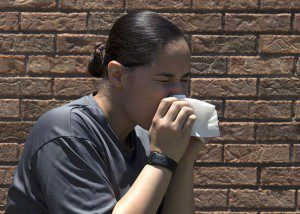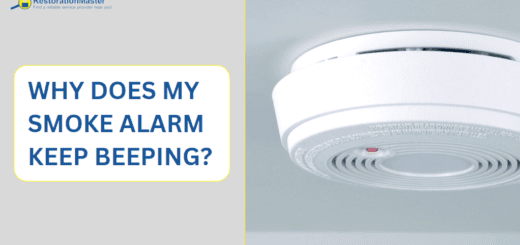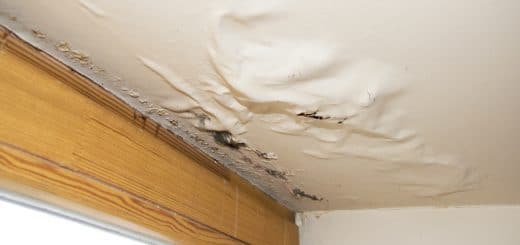What are Symptoms of Mold Allergies?
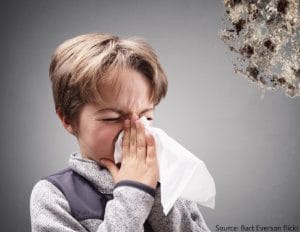 Especially during the warmer seasons, avoiding moldMold is a type of fungus that grows in damp or humid conditi... More can be extremely tough. For those who battle allergic reactions from the sporesSpores are microscopic reproductive units of fungi or mold t... More, the symptoms can last for days, weeks, and even months, disallowing them to enjoy any of their daily activities.
Especially during the warmer seasons, avoiding moldMold is a type of fungus that grows in damp or humid conditi... More can be extremely tough. For those who battle allergic reactions from the sporesSpores are microscopic reproductive units of fungi or mold t... More, the symptoms can last for days, weeks, and even months, disallowing them to enjoy any of their daily activities.
Unfortunately, there are over 1,000 different species of moldMold is a type of fungus that grows in damp or humid conditi... More that exist in the U.S. – a large portion of which are not even visible to the human eye. However, their presence can be noticed immediately, causing those with severe allergies to suffer until the mold is removed properly.
Locations of Mold
As you may already be aware, moldMold is a type of fungus that grows in damp or humid conditi... More thrives off of organic materialsOrganic materials are derived from living organisms, such as... More and excess moisture. In homes and buildings, the structureStructure refers to the framework or components of a buildin... More provides the perfect host for these fungiFungi are a group of organisms, including mold, mildew, and ... More to thrive while the addition of water will allow for its development and growth.
Unfortunately, water damage is very common – due to its extent of possible causes – and can occur anywhere; therefore, moldMold is a type of fungus that grows in damp or humid conditi... More will almost always occur wherever there is water damage. However, the most common locations within the property are known for hosting this intruding fungus can include the following:
- Behind the walls
- Crawlspaces
- Basements
- Attic
- Showers
- Under the floors
- Garages
- Window sills
- And more
They can also exist outside, such as within rotting trees, fallen leaves, grass, compost piles, and more. However, they are most common from the months of July until October.
Symptoms of Mold Allergies
Very similar to others, the symptoms of moldMold is a type of fungus that grows in damp or humid conditi... More allergies can include the following:
- Itching
- Sneezing
- Runny nose
- Congestion
- Dry and scaling skin
- Breathing problems
- Asthma
- Hay fever
While some types of moldMold is a type of fungus that grows in damp or humid conditi... More can trigger these symptoms over time, others can cause them right away. However, if proper mold remediation does not happen right away, the symptoms can get worse over time. In addition, the moldMold is a type of fungus that grows in damp or humid conditi... More can spread to affect new areas, such as in the basement or your bathroom, worsening the situation for you and your building structureStructure refers to the framework or components of a buildin... More.
Although there are some foods that contain a fungus, such as mushrooms or yeast, or others containing yeast, such as bread and vinegar, they do not usually trigger a reaction. It is more likely their direct effect on the blood vessels that may trigger a reaction. In addition, fermented food, such as wine, contains a chemical called histamine, the same substance that is released by your allergy cells to cause a reaction; therefore, it can cause similar symptoms when consumed.
How to Diagnose a MoldMold is a type of fungus that grows in damp or humid conditi... More Allergy from Symptoms
If you suspect you have a moldMold is a type of fungus that grows in damp or humid conditi... More allergy, it is important to visit a doctor to have it diagnosed properly. They will first take a medical history, followed by conducting several skin or allergic IgE blood tests. During these procedures, the doctor may also prick the skin with some fungiFungi are a group of organisms, including mold, mildew, and ... More extracts to see if you have a reaction. Finally, the doctor will use the combination of your medical history, skin testing results, and physical exams to determine if you have a moldMold is a type of fungus that grows in damp or humid conditi... More allergy.
How to Prevent an Allergic Reaction to Mold
While there is no cure for moldMold is a type of fungus that grows in damp or humid conditi... More allergies, there are ways to avoid a future reaction by preventing moldMold is a type of fungus that grows in damp or humid conditi... More growth on your property. Here are some measures you can take to reduce the risk of moldMold is a type of fungus that grows in damp or humid conditi... More both in and outside:
Avoiding Outdoor Mold
- Save your outdoor vacations and activities for the seasons when moldMold is a type of fungus that grows in damp or humid conditi... More count is generally low.
- Wear a facial mask when doing outdoor chores, such as digging up plants, raking leaves, and mowing the lawn.
Preventing Mold on Your Property
- Decrease the indoor moisture or humidityHumidity is the amount of moisture or water vapor present in... More. If any moisture remains, any air cleaners will not work. You can use a hygrometer to measure the humidityHumidity is the amount of moisture or water vapor present in... More level in your home, keeping it below 35%.
- If you must use a humidifier for other purposes, make sure to clean the fluid reservoir at least twice each week to prevent bacteria growth.
- Prevent mildewMildew is a type of fungus that grows on damp surfaces, typi... More accumulation within the home or building. Due to the amount of moisture and bacteria in these areas, bacteria will thrive, including: basements, crawlspaces, laundry areas, and bathrooms.
- Use air conditioning unit with HEPA filter. The HEPA filter will be able to trap all floating moldMold is a type of fungus that grows in damp or humid conditi... More sporesSpores are microscopic reproductive units of fungi or mold t... More while the traditional air cleaners will only reach a specific area. However, be careful to keep it away from heat, ozone, or electrostatic-related appliances.
Removing Mold Growth to Prevent Symptoms
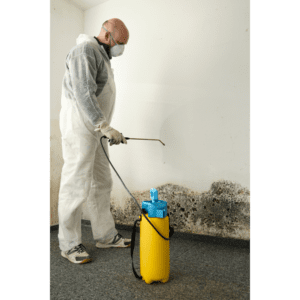 While there are a number of measures you can take to prevent moldMold is a type of fungus that grows in damp or humid conditi... More growth within your home or building, sometimes it cannot be avoided. However, you should never try to remove it yourself, especially if you are allergic to it. This is because any home remedies will not only be ineffective but actually irritate the moldMold is a type of fungus that grows in damp or humid conditi... More and cause it to spread further.
While there are a number of measures you can take to prevent moldMold is a type of fungus that grows in damp or humid conditi... More growth within your home or building, sometimes it cannot be avoided. However, you should never try to remove it yourself, especially if you are allergic to it. This is because any home remedies will not only be ineffective but actually irritate the moldMold is a type of fungus that grows in damp or humid conditi... More and cause it to spread further.
In order to have it completely removed, it is best to hire a mold remediation professional. They will be able to apply unique products that are designed to remove the moldMold is a type of fungus that grows in damp or humid conditi... More at its source. MoldMold is a type of fungus that grows in damp or humid conditi... More specialists are effective and efficient at treating moldMold is a type of fungus that grows in damp or humid conditi... More. Not only will the technicians remove it completely, but they will also restore damage sustained within the building materials as well as identify areas at future growth. Contact your local provider today to get a free estimate for any moldMold is a type of fungus that grows in damp or humid conditi... More growth on your property.










